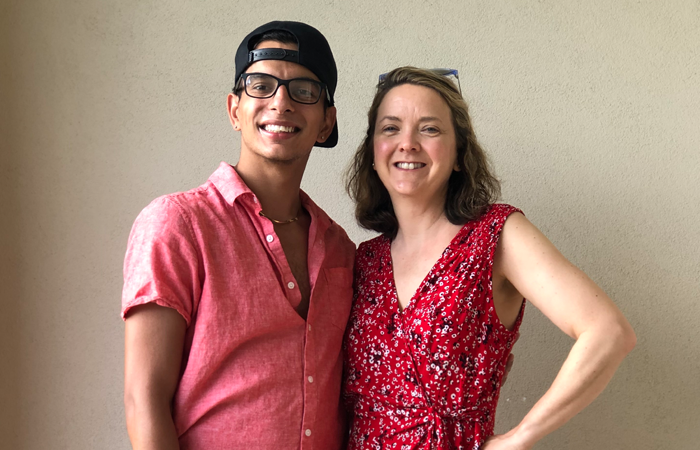How can I bond with a baby that “isn’t mine”?
Some parents feel an instant bond when they meet and hold their infant. For most, however, bonding is a gradual process, taking weeks and sometimes months. More than 50 percent of our adoptive families, when asked to recall those first days and weeks, report that they felt more numb and scared than connected and competent. (Of course, the big dirty secret of parenting is that half of biological parents feel numb and scared, too.)
You may meet your infant in a hospital room, a hotel room, an airport, or at home, in a quiet room or amid a bustling group. Your child may snuggle into your arms or pull away and cry. Some infants become withdrawn and unresponsive, while others light up with a smile. The more you’ve prepared by talking with other adoptive parents about the wide range of experiences, the less likely you are to feel taken aback by your baby’s reaction.
All infants, even newborns, need time to adjust and connect with a new environment and family. They may avoid eye contact, become fussy, refuse to take a bottle, sleep excessively or not at all. This has nothing to do with your parenting skills or whether or not you gave birth to this child. So, try to relax and give your baby time to acclimate.
Mary Ann Curran, director of World Association for Children and Parents, says, “Do expect a lot of time to pass before your child feels like part of your family, and accepts the change that his adoption entails. This does not mean years of disruptive behavior, but it may be a long time before he feels he truly belongs.” Our families say that, even if you don’t feel parental love for your child at first, you should act as though you do. Showing affection helps to build real affection, on both sides.
What can prevent bonding?
Disciplining children while you’re working to build attachment requires understanding, especially if there is the chance that a child has been abused in the past. Older children are especially sensitive to discipline that seems to be rejection. Using “time-ins” — sitting with and comforting the child as he rages — rather than solitary time-outs, is one way to discipline without reinforcing a child’s feeling of rejection.
Keep in mind that behaviors such as hoarding, stealing, and lying may be a child’s expressions of anxiety over situations he cannot control. If disruptive behaviors persist, if a child is struggling with grief, or if she has extreme difficulty bonding with family members, working with a qualified therapist is critical. Some veteran parents regret not seeking professional help when their children first showed signs of distress.
How do I bond with a child who doesn’t speak English?
Developmental psychologists say that communicative language, the skill needed for social interaction and practical applications, is readily acquired, while cognitive language, which we use for reasoning and education, takes much longer to acquire — up to five to seven years. As a result, non-English speaking adoptees learn to communicate basic needs — about food, play, and comfort — within days or weeks. But communicating about grief, loneliness, and homesickness may be impossible. Our families stress the importance of comforting your child without language: cuddling, holding, stroking, even for an older child.
If you are adopting a child from another country, recruit someone who speaks his or her language before homecoming, so that you have a translator in an emergency. Ellen Margolese, a psychiatrist and adoptive mother, says: “Imagine being abducted by strange people who speak a different language. When you think of all the scenarios a child might visualize, their behavior may make more sense.”
What is “cocooning”?
Many of our most experienced families recommend that new parents delay baby showers and other celebrations, and, instead, stay quietly home alone with their new child for the first few weeks. Some go suggest that, to promote attachment, only the parents hold the child. If you plan to follow this advice, make sure you warn visitors (especially grandparents and other family members) ahead of time, so they will not be offended when you ask them to back off.
Can I breastfeed my adopted baby?
An increasing number of adoptive mothers are putting their babies to the breast. Like biological mothers, they find the practice can be frustrating, discouraging, and immensely rewarding. If you plan to nurse, contact La Leche League (a breastfeeding advocacy group) when your home study is approved and ask for an adoption specialist. You will need to prepare for several months before your child comes home.
Will my spouse bond with the baby?
If your spouse was initially reluctant to adopt, you may worry that he or she will be slow to bond. Our families report that, oddly enough, the reluctant spouse is often the one with the first and most passionate attachment. However, as with biological parents, one spouse may bond more slowly than the other.



